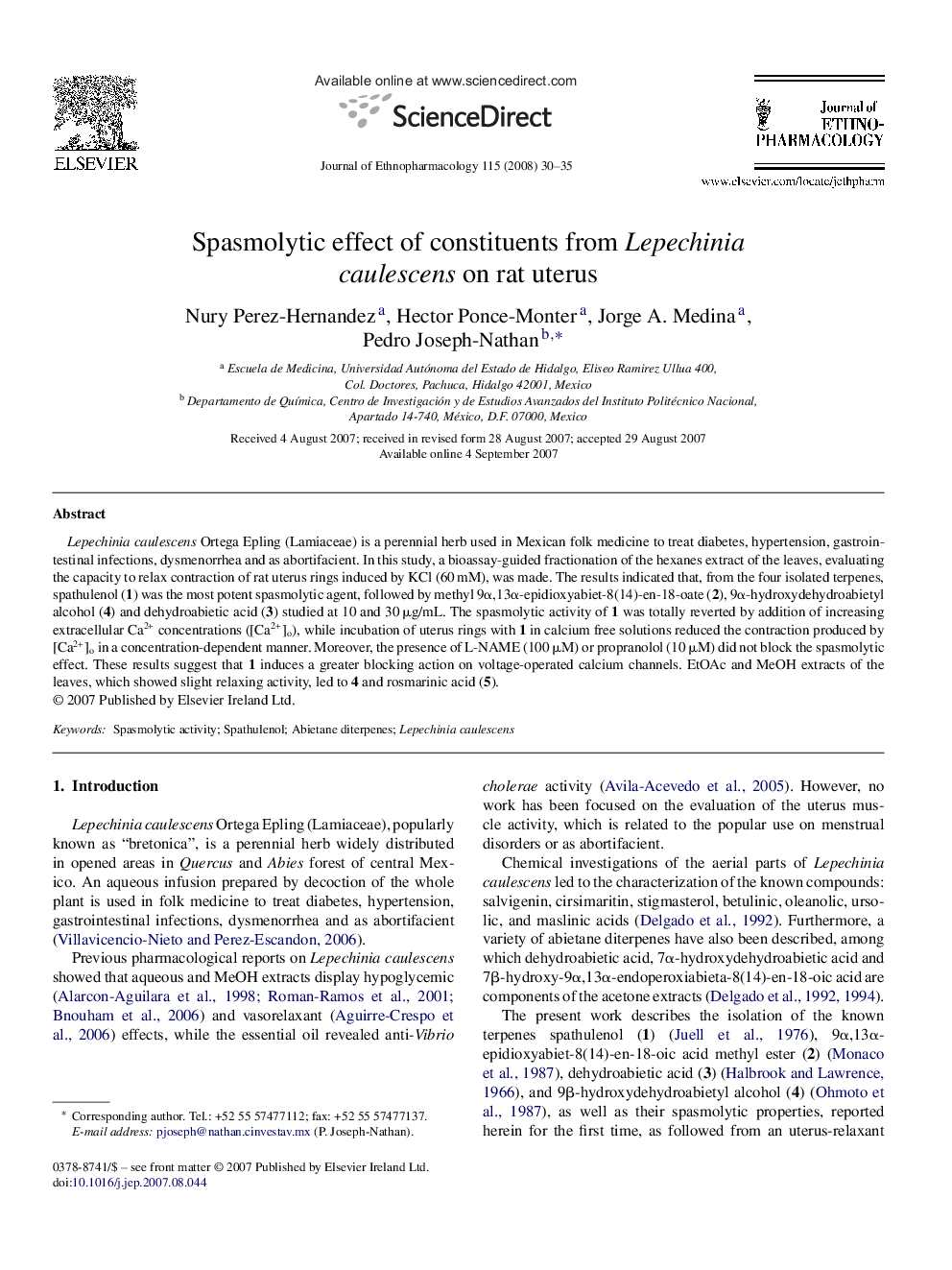| Article ID | Journal | Published Year | Pages | File Type |
|---|---|---|---|---|
| 2547647 | Journal of Ethnopharmacology | 2008 | 6 Pages |
Lepechinia caulescens Ortega Epling (Lamiaceae) is a perennial herb used in Mexican folk medicine to treat diabetes, hypertension, gastrointestinal infections, dysmenorrhea and as abortifacient. In this study, a bioassay-guided fractionation of the hexanes extract of the leaves, evaluating the capacity to relax contraction of rat uterus rings induced by KCl (60 mM), was made. The results indicated that, from the four isolated terpenes, spathulenol (1) was the most potent spasmolytic agent, followed by methyl 9α,13α-epidioxyabiet-8(14)-en-18-oate (2), 9α-hydroxydehydroabietyl alcohol (4) and dehydroabietic acid (3) studied at 10 and 30 μg/mL. The spasmolytic activity of 1 was totally reverted by addition of increasing extracellular Ca2+ concentrations ([Ca2+]o), while incubation of uterus rings with 1 in calcium free solutions reduced the contraction produced by [Ca2+]o in a concentration-dependent manner. Moreover, the presence of L-NAME (100 μM) or propranolol (10 μM) did not block the spasmolytic effect. These results suggest that 1 induces a greater blocking action on voltage-operated calcium channels. EtOAc and MeOH extracts of the leaves, which showed slight relaxing activity, led to 4 and rosmarinic acid (5).
